Catholic pilgrimage to the Holy Land in Israel/Palestine in 2008
Part 2 of 2
C - Jerusalem
We are now in Jerusalem, which is listed as a separate section.
C1 - Jerusalem: an introduction
Jerusalem has a history of at least 6,000 years, sacred to all the 3 monotheistic religions of the World. The total area is about 250 sq km. When the State of Israel was formed in 1948, West Jerusalem was controlled by Israel and East Jerusalem by Jordan. But after the 1967 Six Day War, the victorious Israelis took control of East Jerusalem and declared Jerusalem its capital but the declaration was not recognized by UN and the international communities. The status of the city and the ownership of the holy places remain disputed until today.
Jerusalem has a city population of about 800,000 in 2012, with 64% Jews, 32% Muslims and 2% Christians. It is a very rocky place and boulders are seen on many hill slopes. Shown typical landscape in the “rural” region. The walled part is called the Old City, about 0.9 sq km in area and a UNESCO World Heritage site. Shown the old city wall and a modern 8-meter high concrete wall recently constructed to combat terrorist attacks, built along the disputed boundary between Israel and areas controlled by the Palestinians.
C2 - Mount of Olives
Our first stop in Jerusalem was the Mount of Olives, a mountain ridge east of the Old City of Jerusalem and separated from it by the Kidron Valley. Several events prior to his crucifixion happened to Jesus here, so several important churches are located on this mount to commemorate the events. A big part of the hill slopes is used for a Jewish cemetery, 3,000 years old and with 150,000 graves. Also shown are the golden spires of the Russian Orthodox Church of St Mary Magdalene.
C3 - Chapel of the Ascension, Mount of Olives
This small octagonal chapel marks the place on Mount of Olives where Jesus ascended to heaven. The small chapel has a long history. The tradition started in the 4th century. The present octagonal form of the chapel dates to the Crusader restoration of 1102. The Muslims took over this place in 1198 and used it as a mosque for another 300 years. In Islam the ascension of Jesus (Prophet Isa) is recognized. A stone dome was added by the Muslims.
A sectioned-off area on the chapel floor bears the supposed imprint of Jesus’ right foot before ascending to heaven. The left foot imprint was said to be removed sometime in 1200 to the al-Aqsa Mosque on the Temple Mount. A mosque and minaret were added next to the chapel in 1620. This chapel is considered to be part of the mosque complex and the ownership belongs to the Muslims. That does not prevent non-Muslims visiting the chapel. Shown the octagonal chapel and the mark of the right foot print.
C4 – Roman Catholic Church of Dominus Flevit, Mount of Olives
Dominus Flevit means "the Lord has wept".
Bible reference: Luke 19:41
As he approached Jerusalem and saw the city, he wept over it.
Jesus wept over Jerusalem because it has failed to serve its intended purpose as an example of holiness despite being a Zion city: the temple has turned into a market place, Jesus himself would be rejected and executed, and it would remain as a turbulent city in history.
The Church of Dominus Flevit is located at a site associated with the tradition that Jesus wept over the city as he rode towards it on Palm Sunday. This church, built in 1955 over an old Byzantine church, is tear-shaped. The most notable feature is the “chalice” window. During the construction of the church in the 1950s, ancient tombs were uncovered, dating between 136 BC and 300 AD. They were left in the pit, last photo.
C5 – Roman Catholic Church of Pater Noster, Mount of Olives
The Church of Pater Nostar (Lord's Prayer), a partially re-constructed church stands on the traditional site of Jesus' teaching of the Lord's Prayer. The first church here was built in the early 4th century by Emperor Constantine. A newer church was constructed in 1152 by the Crusaders. Most of it have fallen into ruins. It was taken over by the Carmelites in the 2nd half of the 19th century, with a monastery and a small church built in the 1870s.
A plan to re-build a new grand church identical in size to the 4th century church was made in the late 1800s but construction did not go beyond the foundation stage because of lack of fund. But the cloister and some walls were completed. Shown part of the cloister and the courtyard and the beautiful tiles on the wall.
We visited the crypt of the old Crusader church to look at the original place where the “Lord’s Prayer” was taught by Jesus, and most appropriately we recited the same prayer together. The church is famous for the 140+ renditions of the “Lord’s Prayer” inscribed onto ceramic tiles, in different languages. They cover every part of the walls of the cloister. Shown a rendition in Thai.
C6 - Garden of Gethsemane, Mount of Olives
The garden was identified in the 4th century as the place where Jesus prayed, was betrayed by Judas and arrested. The Greek word "gethsemane" means “olive oil press”. The fenced garden is about the size of a basketball court, a fraction of the original garden. There are 8 olive trees in the garden, said to be between 300 to 2,300 years old. They looked very old indeed.
C7 – Roman Catholic Church of All Nations, Mount of Olives
This is the church sitting on the place traditionally taken as where Jesus prayed the night before his arrest. It is also known as the Church of Agony to signify the agony faced by Jesus just before his arrest. It is located on part of the original Garden of Gethsemane.
Bible reference: Luke 22:39-41
He then left to make his way as usual to the Mount of Olives, with the disciples following. When he reached the place he said to them, 'Pray not to be put to the test.' Then he withdrew from them, about a stone's throw away, and knelt down and prayed.
The new church was built in 1924 based largely on the outline of the 4th century church. It was funded by contributions collected from 12 countries thence the popular name of the Church of All Nations. It is a very beautiful church. The roof is made up of 12 mini-domes. Each of the 12 cupolas bears the coats of arms of one of the 12 funding countries. The violet windows are made from translucent alabaster, to dim the light coming in, perhaps representing the “hour when darkness reigns” phased in one of the Gospels. The 5th photo shows the "unusual" high altar, and lastly a mini group photo with the resident pries
C8 - Mount Zion
Mount Zion is a hill just outside the Old City. Remember the Mount of Olives is east of the Old City? Mount Zion is to the south or south-west. The term of Mount Zion has been mentioned in the Old Testament many times. During ancient times the term has quite a different meaning. It did mean part of the city but not the current location. And often it was used to mean the whole city of Jerusalem or even the whole Israeli nation or even the people of Israel.
There are also several churches on Mount Zion related to Jesus. Shown part of Jerusalem outside the Old City as viewed near the peak of Mount Zion and the back ground in the 2nd photo is part of the Old City.
C9 - The Cenacle, Mount Zion
The building identified as the Cenacle is a small 2-story structure within a larger complex of buildings on the summit of Mount Zion. The upper storey was built by the Franciscans in the 14th century to commemorate the Last Supper. It is also identified as the Upper Room in which the Holy Spirit descended upon the disciples at Pentecost. On the ground floor is a cenotaph meant for King David though he was not buried here.
This is a hall proclaimed sacred by the Jews and the Muslims as well. The symbolic Tree of Life at a corner is uniquely Jewish while the coloured glass windows with Arabic Koranic verses are Islamic. The Franciscans were evicted in the early 16th century and the room was turned into a mosque.
C10 – Roman Catholic Church of Dormition, Mount of Zion
"Dormition" is more an Eastern Orthodox tradition which teaches that Mary died a natural death, just like any human, and her soul was received by Christ upon death. Her body was resurrected on the 3rd day, and was taken up to heaven, so body and soul at different times. "Assumption" is a Catholic tradition which teaches that Mary was “assumed” into heaven in bodily form. It is not exactly clear whether she “died” or not. Nevertheless both these 2 branches of Christianity agree that she was taken to heaven in bodily form.
The huge complex belongs to the Benedictines, officially the Order of Saint Benedict, a Roman Catholic set up, though the name and decoration lean towards the orthodox traditions. The church is a circular building capped with a conical roof, built around 1910 on the traditional site where the Virgin Mary fell on eternal sleep. There are many mosaics, frescoes, paintings and statues. Father Frederick is standing in front of a niche in the main church.
At the crypt is the Chapel of the Dormition with a life-size statue of the sleeping Mary, made with cherry-wood and ivory. The mosaic on the ceiling shows Jesus receiving her soul, surrounded by 6 other famous women from the Bible.
(Note in 2021: this is a big complex set in a congested surrounding. The church building itself is fortress-like, capped with a conical roof 7-storey high, and with 4 towers. Because of the limited space I could not shoot any meaningful photo of the exterior of the building. I downloaded one from the internet to show the impressive building. Photo credit: Andrew Shiva/Wikipedia. It was taken on high ground some distance away.
C11 – Roman Catholic Church of St Peter in Gallicantu, Mount of Zion
“Gallicantu” in Lain means cock’s crow. The present church was built in 1931, and restored in 1997, on the traditional site of the house of the high priest Caiaphas where Jesus was put on trial. It is located in the eastern slope of Mount Zion. It was here that Peter denied knowing Jesus 3 times before the cock crowed the second time, hence the name of the church.
Bible reference: Mathew 26: 69-75
Meanwhile Peter was sitting outside in the courtyard, and a servant-girl came up to him saying, 'You, too, were with Jesus the Galilean.' But he denied it in front of them all….another servant-girl saw him and said to the people there, 'This man was with Jesus the Nazarene.' …..And again, with an oath, he denied it…..A little later the bystanders came up and said to Peter, 'You are certainly one of them too!.....Then he started cursing and swearing, 'I do not know the man.' And at once the cock crowed. And Peter remembered what Jesus had said, 'Before the cock crows you will have disowned me three times.' And he went outside and wept bitterly.
An extraordinary feature is a huge cross-shaped “window” on the ceiling, covered over with stained-glasses.
At the crypt of the church is a prisoner’s cell where Jesus might be retained, 1st photo. Shown also a beautiful window, a set of statues consisting of St Peter, the 2 servant girls and a Roman soldier, and part of the huge painted cast-iron main door showing St Peter in denial.
C12 - Western city wall or the Wailing Wall, Old City
Mt Moriah at the centre of Old Jerusalem is sacred to the Jews. King Solomon built the First Temple here in the 900s BC. King Herod the Great built the Second Temple here, around the time of the living Jesus. A huge rectangular platform, about 520 m by 300 m, was built up with retaining walls to provide the level open space needed for the temple and the courtyard. This is now called the Temple Mount.
The Second Temple was destroyed by the Romans in 70 AD and no new Jewish temple was built after that. The Jews, with no temple to pray, started to pray facing the middle section of the western retaining wall, now called the Wailing Wall. When the Muslims took over Jerusalem, several Islamic shrines were built here, including the famed Dome of the Rock. When Jerusalem came under the control of the Israelis in 1967, the situation remained status quo. The Israelis would certainly like to take back the Temple Mount to build their holy temple again but this was politically impossible since the mount were housing the Muslim holy shrines.
The wall is about 32 m in height, the exposed part about 19 m. Most of the lower blocks are original, dating to the Second Temple built 2,000 years ago. Others are from the 7th century and 11th century, additions to repair earthquake damages. The blocks vary greatly in size. The typical one is about 1 m by 2 m by 2 m. The biggest piece is around 13.5 m by 3.5 m by 3.5 m, weighing 550 tons. The space in front of the wall where the Jews prayed is called the Western Wall Plaza, 3rd photo. Jews often prayed with lamentation here, to mourn the destruction of their holy temple, some wailing loudly, hence the wall is also known as the Wailing Wall. The tradition of lamentation dates back to the late 2nd century. There is also a controversial practice of inserting written prayer sheets into the crevices of the wall, last photo.
C13 - The Temple Mount, Old City
From the western city wall we went up to the Temple Mount, entering the Muslim Quarter. There was a long queue to get in because of time required in security checks similar to that before boarding a plane, with X-ray screening of bags, use of metal detectors, etc. Shown Father Frederick in the long queue, and the beautiful Arabic arches at the top of the stairway entering the mount from the Moors Gate. There are more than 10 entrances to the mount. Non-Muslims could enter only through this Moors Gate.
Today’s Temple Mount is a spacious plaza of minarets, domed pavilions, fountains, date palms and cypress trees. It occupies about one-sixth of the Old City.
The most famous shrine is the Dome of the Rock, built in 692 to commemorate the ascension of Prophet Mohammad to heaven. The Dome houses the Holy Rock, said to be the rock associated with Abraham’s sacrificial offering and Muslims believe that Prophet Mohammad began his night ascent to heaven from this rock. The Dome is considered as the 3rd holiest Muslim shrine in the World, after Mecca and Medina. The mosaics on the wall are dated to the 16th century while the dome was gilded in gold in 1994 with the 150 kg of gold donated by the King of Jordan. Non-Muslims are not allowed to go inside.
The other main Islamic structure on the Temple Mount is the al-Aqsa Mosque which is the “congregational” mosque for Muslims in Jerusalem, 1st photo. The earliest version was built in 705. During the rule of the Crusaders it was used as the King’s Palace. Then there is the Dome of the Chain, 2nd photo, a kind of miniature Dome of the Rock. The purpose of it being built is unsure but it is this small dome that stands at the centre of the Mount, not the bigger Dome of the Rock. Other photos show general views on the mount.
C14 – Roman Catholic Church of St Anne, Old City
The present church, in the Muslim Quarter of the Old City, was built in classical Romanesque style some time in 1138 by the Crusaders to replace an older Byzantine church, erected over the traditional home of St Anne, mother of the Virgin Mary. It fell into ruins during the later part of the Muslim era and was rehabilitated in the 1850s by the French. It is the best preserved Crusader church in the city. The church is famous for its excellent acoustics, designed for chanting.
C15 - Bethesda Pools, Old City
Next to the Church of St Anne are the ruins of the older Byzantine church and the Bethesda Pools. To augment water supply to Jerusalem, a pool was cut into the rock to retain rainwater in the 8th century BC, and another pool cut in the 2nd century BC. During the early Roman times water in the pools was said to have healing properties and more baths and small pools added. It was here that Jesus cured a cripple on the Sabbath and annoyed the temple elders.
Bible reference: John 5: 2-9
Now in Jerusalem…..there is a pool called Bethesda…..and under these were crowds of sick people, blind, lame, paralysed. One man there had an illness which has lasted 38 years, and when Jesus saw him lying there ….. Jesus said, ‘Get up, pick up your sleeping mat and walk around.’ The man was cured at once, and he picked up his mat and started to walk around.
C16 - Via Dolorosa, Old City
Via Dolorosa, or “Way of Sorrow”, is the route along which Jesus carried his cross on his way from his condemnation to his crucifixion. It is a major draw for the pilgrims, who would walk along this route and recite prayers at the 14 designated stations, called Stations of the Cross. The first 7 Stations of the Cross fall within the Muslim Quarter of the Old City, the next 2 at the border with the Christian Quarter, and the last 5 located inside the Church of the Holy Sepulchre. The first Station is where Jesus was tried by Pontius Pilate and condemned to death. The current Via Dolorosa is based on tradition rather than archaeological evidence. This is a practice common to Western churches: Roman Catholic, Anglican, Lutheran and Methodist.
Tradition holds that the trial was held at Antonia Fortress, which is now housing a school and is not accessible. Hence most pilgrim groups would start the walk at the nearby Franciscan Monastery of the Flagellation. The first 2 photos show the Church of Flagellation constructed in 1928-29 over the older Crusader church. The route also passes through shops in the Muslim Quarter. We of course participated in the walk.
C17 - Church of the Holy Sepulchre, Old City
The Church was built upon the traditional site of the Crucifixion, Burial and Resurrection of Jesus. It is thus the most important and most holy shrine within Christendom. The first church was built by Emperor Constantine and consecrated in 335. It was a monumental edifice, dwarfing even the building we see today. The first church measured about 180 m by 100 m.
The church we see now dates to a number of periods, having been partially destroyed and rebuilt on several occasions, reflecting the typical Christian experience in the Holy Land. Substantial destruction occurred in 614 and 1009 caused by the invading Persians and Arabs, and a major fire in 1808, while major restoration was carried out by the Crusaders in the 1140s and the Greek Orthodox in the late 1800s. It was also shaken by an earthquake in 1927 with further repair carried out in the 1950s. The present church is thus a rather confusing place, with different architectural styles for different parts of the church, different styles of decoration, and with adjacent buildings very close by. Shown the main facade of the church which leads to the south transept, and 2 photos of the interior of the church.

It is a large church with many chapels, under the joint administration of the 3 main communities: Greek Orthodox, Roman Catholic and the Armenian Apostolic. Some of the priceless assets are shared but each still has its own territory. The Greeks have the lion's share. The lesser groups: Coptic Orthodox, Syriac Orthodox and Ethiopian Orthodox do have their own chapels too. The fight for territorial control has a long and ugly history. The Roman Catholics are represented by the Franciscans under the organisation called Custody of Holy Land.
We celebrated mass at the one of the Roman Catholic chapels, a very small one next to the Chapel of St Mary Magdalene. It could be part of the Chapel of Mary Magdalene too. Shown the altar of the Chapel of St Mary Magdalene, the altar of the small cave-like chapel and Father Frederick saying mass.

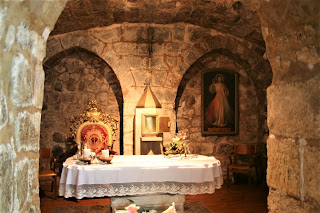
The church has 2 domes, shown here some columns supporting the main dome, the Rotunda. The Tomb of Jesus is directly below the Rotunda. A few of the columns are said to be those from the original 4th century church. The new dome was built in the 1960s, diameter 20.5 m and height 34 m. In 1997 a 12-point star-burst was added as decoration to symbolise the outreach of the 12 apostles.
The last 5 Stations of the Cross are located within the church itself. The first photo shows the 12th century wall mosaic at Station No 11: Chapel of the Nailing of the Cross. This is a Roman Catholic chapel. The next 2 photos show Station 12: Chapel of the Crucifixion where Jesus died on the Cross, with the silver icon of St John and the Virgin Mary beside him. The 3rd photo shows the icon of the Virgin Mary. This chapel belongs to the Greek Orthodox. The last photo shows an Armenian chapel called "Station of the Holy Women".
The most holy chapel in the church is the Chapel of the Holy Sepulchre, housing the Tomb of Christ. This is also the 14th Station of the Cross. This chapel belongs to the Greek Orthodox but everybody is allowed to enter. During our visit there was a long queue of more than an hour for one to go inside the chapel, 1st photo. The building to the right of the photo is called the Edicule built to house the tomb. The 2nd photo shows entrance to the tomb.
The space inside is about 5 ft by 6 ft, on one side is the burial slab where the body of Jesus was supposed to be laid on. The free space could accommodate only 2 pilgrims, plus a Greek priest already stationed inside. No photography was allowed. The 2 photos shown are downloaded from the internet. Photo credit: The Independent and The Irish Times.
The stern-faced priest would ask us to leave after we were inside for may be 20 seconds! You only have enough time to kneel and make your sign of the cross, touch the cold marble bed-slab, stand up to glance at all the things on the slab and the wall and leave! In less than a minute.
(Note in 2021: What we saw in 2008 as the white marble burial slab was not the actual surface where Jesus was supposed to be laid on. It was only the marble protective slab fixed over the real limestone burial slab. The extra protective slab was put in around 1555 or earlier to prevent pilgrims chipping off pieces of the original slab as souvenirs. In a repair project carried out in 2016 for the tomb and the Edicule, the original slab was revealed. It was made of grey limestone and the condition is said to be intact.)
The church is decorated with relics, paintings, mosaics, lamps etc. Shown a framed mosaic piece, a mural, a chandelier and a row of vases above the Stone of Anointing.
(Note in 2021: this is a very confusing place because of the many rounds of partial reconstruction. There is no symmetry at all. The building itself has different number of floors at different places. Many staircases and “alleys”. And very dark inside making photography difficult. And crowded too at our time of visit.)
C18 - Tomb of Jesus: is this the place it claims to be?
The location is obviously controversial. The following expert view is generally accepted.
Dan Bahat, a non-Christian and former city archaeologist of Jerusalem, wrote in the Biblical Archaeological Review, May/June 1986,
“We may not be absolutely certain that this church is the site of Jesus’ burial, but we certainly have no other site that can lay a claim nearly as weighty, and we really have no reason to reject the authenticity of the site.”
D – Footnote
This story is about the pilgrimage in Holy Land. On the same tour we also visited a few places in Jordan, and a few more places in Israel/Palestine which are not really religious sites. The story of touring these places will be told separately.
Our tour leader was the hard-working George Yeow (g_yeow@hotmail.com), while the accompanying priest was the lovable Rev Father Frederick Joseph, the parish priest of the Church of St Jude, Rawang. Many thanks to them (and fellow pilgrims) for the spiritually uplifting pilgrimage. George is the one on the extreme left in the group photo taken at Mount Zion.



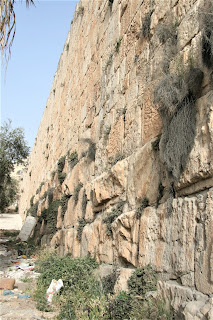








































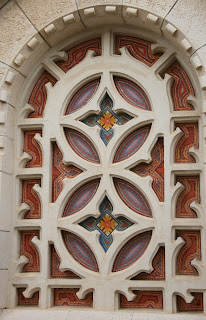










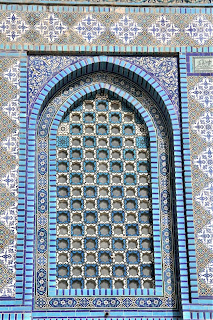

































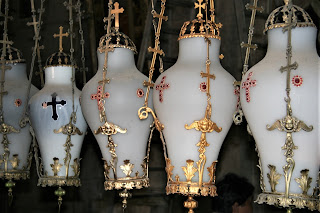

No comments:
Post a Comment